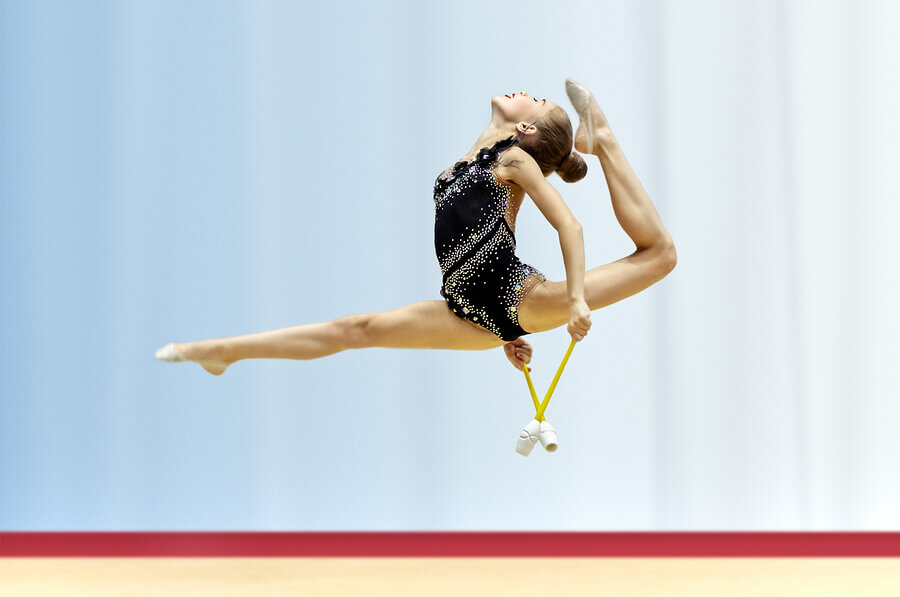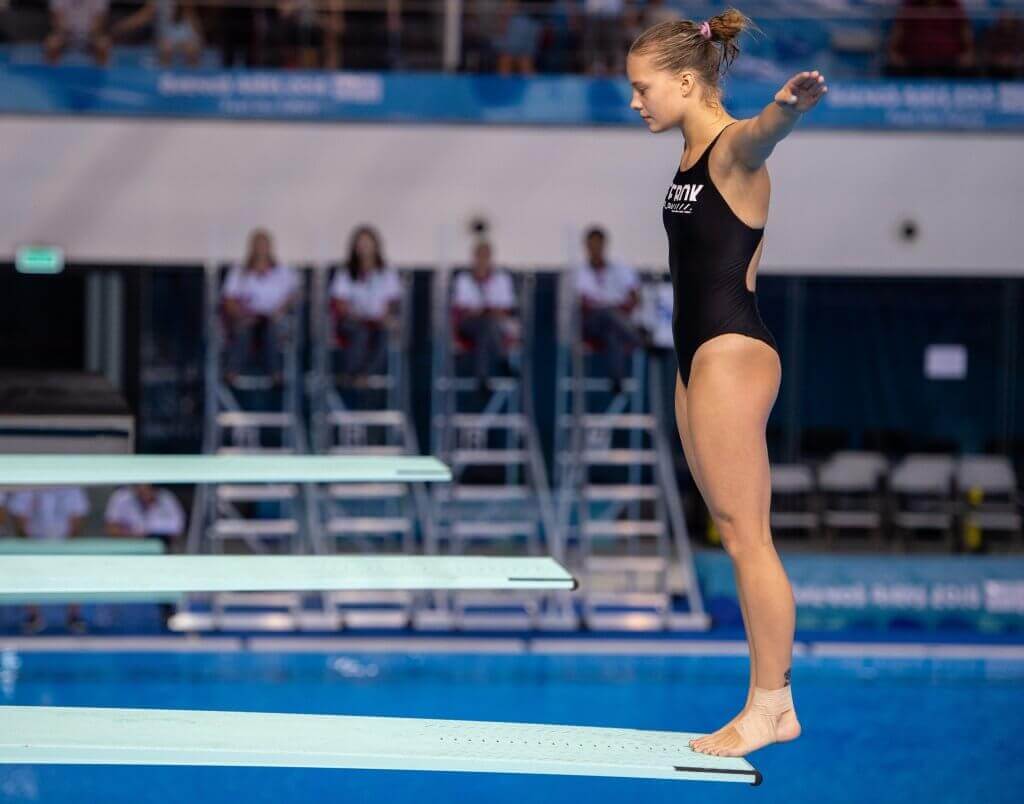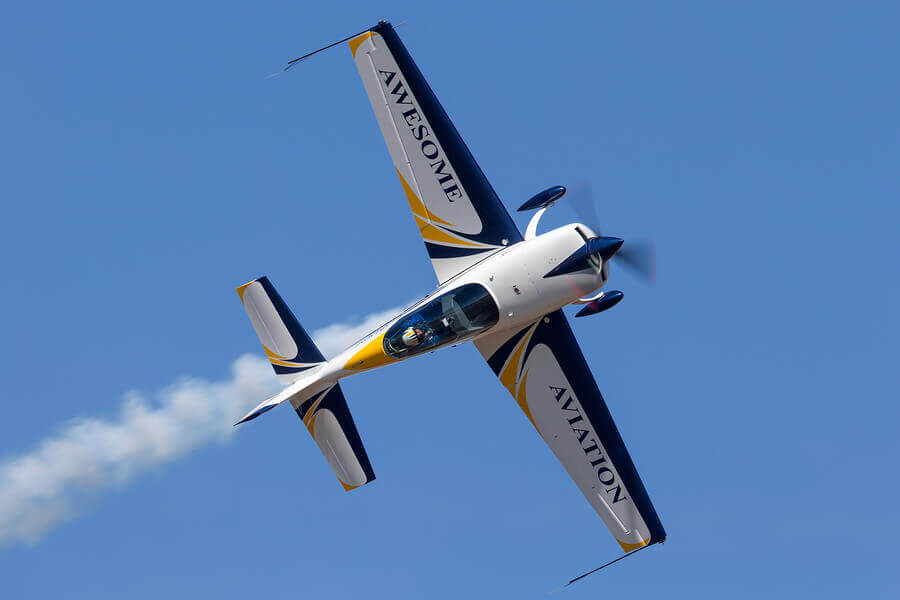Discover the World of Acrobatic Sports

Acrobatics are sports activities and, at the same time, performing arts. Not only do they require balance, but also coordination and agility. In this article, we’ll tell you all about the world of acrobatic sports.
What acrobatic sports are there?
The history of acrobatic sports is much older than many people realize. The historic civilizations that existed in Europe and Asia performed and developed these sorts of popular tricks. Later, they became “professional” acts with competitions. We’ll explain the most well-known acrobatic sports in the following article.
1. Acrobatic gymnastics
Acrobatic gymnastics–or “acro” for short–is a sports discipline that makes up part of the International Gymnastics Federation. Exercises must include balanced and flexible acrobatic movements as well as jumps, twists, and teamwork. The objective is for participants to form shapes and pyramids with their bodies in a harmonic and coordinated fashion.
The floor where these competitions take place is similar to that of artistic and rhythmic gymnastics and measures 39 feet. The exercises have a variable duration, according to the category, and usually last about two and a half minutes. The categories are mixed pairs, masculine or feminine, feminine trios, masculine quartets, and mixed groups of three and six participants.

When scoring, judges consider the mounting, maintenance, and dismounting of the figures. They also look at the acrobatics included in the performance.
2. Diving: acrobatic sports
This aquatic sport–and means of entertainment–consists of jumping into a pool of water from a high point. This can be a fixed point (cliff, bridge, rock) or a moveable one (trampoline or platform). The time that divers spend in the air before entering the water is minimal. Just the same, they must train arduously in order to achieve precision, grace, and acrobatics.
There are a wide variety of jumps–forward, backward, inverse, inward, with twists, and even starting from a headstand. Judges consider six different aspects when it comes to scoring:
- Starting position
- Approach and takeoff
- Flight
- Entry
- Degree of difficulty.

The first diving competitions (that we know of) date back to ancient Greece–more precisely, around the Peloponnesian coast. In modern times, men’s diving was included in the Olympic Games for the first time in 1904 for men. Eight years later, in 1912, women divers participated in the Olympic Games for the first time.
3. Aerobatics
Aerobatic flights are a breathtaking sport–a spectacle that we should all witness at some point in our lives. Here, pilots perform maneuvers and pirouettes in a special plane while leaving trails in the air.
The acrobatics include rotating the plane around a longitudinal, transversal, or vertical axis. Competitions are divided into different categories, according to skill: primary, sportsman, intermediate/Yak-52, advanced, and unlimited. The most eye-catching maneuvers are those that involve teams of up to 16 different planes. Usually, these teams belong to a country’s armed forces.

Aerobatic planes are designed without the need for the general functionality of typical airplanes. In other words, they’re not allowed to carry passengers or cargo.
4. Trampolining: acrobatic sports
Trampolining is a sports discipline that falls into the categories of gymnastics and acrobatic sports. In this case, athletes perform exercises on different elastic apparatuses with acrobatics as the main ingredient. The sport was created in the United States in 1934 and was later used to train astronauts (in order for them to understand the effects of zero gravity).
In 1948, the first-ever trampolining competition took place and in 1955 it came to Europe. The first world trampolining competition took place in London in 1964. And since that time, the sport has been part of the Olympic Games.

As you can guess, trampolining–or trampoline gymnastics–takes place on a trampoline. To be more specific, the trampoline measures 82 feet long by 3.5 feet wide. Athletes must perform a series of eight acrobatic elements:
- On a 10 foot double mini-tramp which they approach after running up.
- On a trampoline, for obligatory and free exercises consisting of 10 elements.
- Or on two parallel trampolines, for synchronized routines involving two gymnasts and ten obligatory elements.
5. Freestyle motocross
The last sport we want to mention in our list of acrobatic sports is freestyle motocross-or FMX. This discipline falls into the category of motorcycling and consists of performing jumps and acrobatics in the air and landing cleanly. Participants can use motocross motorcycles or all-terrain vehicles–both on dirt or on the sand. In fact, there’s even a category for snowmobiles.
The main competition for freestyle motocross takes place at the X Games, both summer and winter. In these games, there are five different FMX categories: Best Whip, Freestyle, Sessions, Best Trick, Step Up, and Quarterpipe.
Without a doubt, acrobatic sports offer a wide variety of disciplines that offer an adrenaline rush to participants as well as spectators. Have you heard of them before? Which one would you like to try out?
Acrobatics are sports activities and, at the same time, performing arts. Not only do they require balance, but also coordination and agility. In this article, we’ll tell you all about the world of acrobatic sports.
What acrobatic sports are there?
The history of acrobatic sports is much older than many people realize. The historic civilizations that existed in Europe and Asia performed and developed these sorts of popular tricks. Later, they became “professional” acts with competitions. We’ll explain the most well-known acrobatic sports in the following article.
1. Acrobatic gymnastics
Acrobatic gymnastics–or “acro” for short–is a sports discipline that makes up part of the International Gymnastics Federation. Exercises must include balanced and flexible acrobatic movements as well as jumps, twists, and teamwork. The objective is for participants to form shapes and pyramids with their bodies in a harmonic and coordinated fashion.
The floor where these competitions take place is similar to that of artistic and rhythmic gymnastics and measures 39 feet. The exercises have a variable duration, according to the category, and usually last about two and a half minutes. The categories are mixed pairs, masculine or feminine, feminine trios, masculine quartets, and mixed groups of three and six participants.

When scoring, judges consider the mounting, maintenance, and dismounting of the figures. They also look at the acrobatics included in the performance.
2. Diving: acrobatic sports
This aquatic sport–and means of entertainment–consists of jumping into a pool of water from a high point. This can be a fixed point (cliff, bridge, rock) or a moveable one (trampoline or platform). The time that divers spend in the air before entering the water is minimal. Just the same, they must train arduously in order to achieve precision, grace, and acrobatics.
There are a wide variety of jumps–forward, backward, inverse, inward, with twists, and even starting from a headstand. Judges consider six different aspects when it comes to scoring:
- Starting position
- Approach and takeoff
- Flight
- Entry
- Degree of difficulty.

The first diving competitions (that we know of) date back to ancient Greece–more precisely, around the Peloponnesian coast. In modern times, men’s diving was included in the Olympic Games for the first time in 1904 for men. Eight years later, in 1912, women divers participated in the Olympic Games for the first time.
3. Aerobatics
Aerobatic flights are a breathtaking sport–a spectacle that we should all witness at some point in our lives. Here, pilots perform maneuvers and pirouettes in a special plane while leaving trails in the air.
The acrobatics include rotating the plane around a longitudinal, transversal, or vertical axis. Competitions are divided into different categories, according to skill: primary, sportsman, intermediate/Yak-52, advanced, and unlimited. The most eye-catching maneuvers are those that involve teams of up to 16 different planes. Usually, these teams belong to a country’s armed forces.

Aerobatic planes are designed without the need for the general functionality of typical airplanes. In other words, they’re not allowed to carry passengers or cargo.
4. Trampolining: acrobatic sports
Trampolining is a sports discipline that falls into the categories of gymnastics and acrobatic sports. In this case, athletes perform exercises on different elastic apparatuses with acrobatics as the main ingredient. The sport was created in the United States in 1934 and was later used to train astronauts (in order for them to understand the effects of zero gravity).
In 1948, the first-ever trampolining competition took place and in 1955 it came to Europe. The first world trampolining competition took place in London in 1964. And since that time, the sport has been part of the Olympic Games.

As you can guess, trampolining–or trampoline gymnastics–takes place on a trampoline. To be more specific, the trampoline measures 82 feet long by 3.5 feet wide. Athletes must perform a series of eight acrobatic elements:
- On a 10 foot double mini-tramp which they approach after running up.
- On a trampoline, for obligatory and free exercises consisting of 10 elements.
- Or on two parallel trampolines, for synchronized routines involving two gymnasts and ten obligatory elements.
5. Freestyle motocross
The last sport we want to mention in our list of acrobatic sports is freestyle motocross-or FMX. This discipline falls into the category of motorcycling and consists of performing jumps and acrobatics in the air and landing cleanly. Participants can use motocross motorcycles or all-terrain vehicles–both on dirt or on the sand. In fact, there’s even a category for snowmobiles.
The main competition for freestyle motocross takes place at the X Games, both summer and winter. In these games, there are five different FMX categories: Best Whip, Freestyle, Sessions, Best Trick, Step Up, and Quarterpipe.
Without a doubt, acrobatic sports offer a wide variety of disciplines that offer an adrenaline rush to participants as well as spectators. Have you heard of them before? Which one would you like to try out?
All cited sources were thoroughly reviewed by our team to ensure their quality, reliability, currency, and validity. The bibliography of this article was considered reliable and of academic or scientific accuracy.
- Equipo de gimnasia acrobática de Azerbaiyán gana 3 medallas en San Petersburgo. 2019. Agencia Informativa Estatal de Azerbaiyán. https://azertag.az/es/xeber/Equipo_de_gimnasia_acrobtica_de_Azerbaiyn_gana_3_medallas_en_San_Petersburgo-1328525
- Urdaneta J. 2019. Lara con buen pie nacional de saltos ornamentales. El informador. https://www.elinformador.com.ve/deportes/lara-con-buen-pie-nacional-de-saltos-ornamentales/
This text is provided for informational purposes only and does not replace consultation with a professional. If in doubt, consult your specialist.








